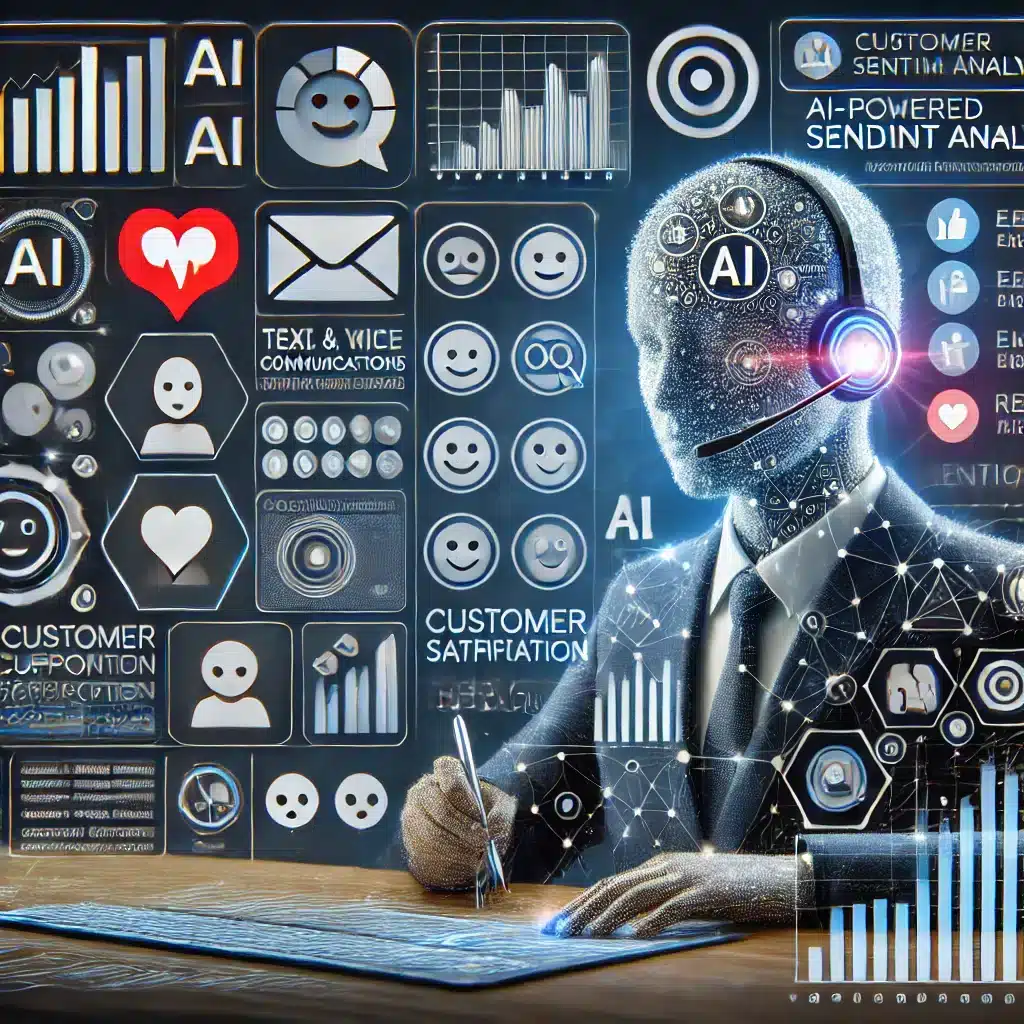The world of artificial intelligence (AI) is vast, intricate, and continuously evolving. As technology advances, AI is becoming a significant part of our lives, influencing a variety of sectors and revolutionizing how we interact with the digital world. This article delves deep into understanding what AI is, how it works, its various types, and applications, and the challenges and future prospects it holds. By examining these facets, we aim to unravel the complexities surrounding artificial intelligence.
What is Artificial Intelligence (AI)? Understanding AI Basics
Defining Artificial Intelligence and Its Core Concepts
Artificial intelligence, commonly referred to as AI is a domain of computer science focused on creating systems capable of performing tasks that typically require human intelligence. These tasks include learning, reasoning, problem-solving, perception, and language understanding. AI aims to simulate human intelligence through various methods, including machine learning, an integral part of creating AI models that can learn from data and improve over time.
A Brief History of Artificial Intelligence: From Turing to Modern AI
The concept of artificial intelligence dates back to ancient times, when myths and stories about artificial beings endowed with intelligence were common. However, AI as a formal field of study began in the mid-20th century. The term “artificial intelligence” was coined by John McCarthy in 1956 during a conference at Dartmouth College. Pioneers like Alan Turing, who proposed the Turing Test, also significantly contributed to the field. Over the decades, AI has seen periods of both significant progress and stagnation, leading to current advancements in machine learning and deep learning technologies.
Types of Artificial Intelligence (AI): Narrow AI to Strong AI
AI can be categorized into different types based on capabilities and functionalities. The primary types include narrow AI, artificial general intelligence (AGI), and strong AI.
- Narrow AI, also called weak AI, is designed to perform specific tasks, such as facial recognition or language translation.
- AGI, or general AI, refers to AI systems with the ability to understand, learn, and apply knowledge across a wide range of tasks, akin to human intelligence.
- Strong AI, though largely theoretical, envisions machines with the ability to perform any intellectual task that a human being can do, encompassing both narrow AI and AGI.
How Does Artificial Intelligence Work? AI Technologies Explained
The Role of Machine Learning
Machine learning drives AI by developing algorithms that analyze data, recognize patterns, and make decisions. Techniques include:
- Supervised Learning: Training models with labeled data.
- Unsupervised Learning: Allowing models to find hidden patterns in unlabeled data.
Artificial Neural Networks Explained
Artificial neural networks (ANNs) are computing systems inspired by the biological neural networks in human brains. ANNs consist of layers of artificial neurons that process input information, transmit it through various hidden layers, and produce an output. Each neuron in the network is connected and works independently, but also collaborates to solve complex tasks. These networks play a crucial role in machine learning and deep learning, enabling AI systems to learn from examples and improve their performance over time.
The Process of Deep Learning
Deep learning, a subset of machine learning, involves training artificial neural networks with many layers, known as deep networks. These networks can automatically discover representations from raw data by utilizing multiple levels of abstraction. Deep learning has been instrumental in achieving significant breakthroughs in various AI applications, such as image recognition, natural language processing, and generative AI. The added complexity and depth of these networks enable them to handle massive amounts of data and perform sophisticated tasks that were previously unattainable.
What are the Different Types of AI?
Narrow AI (Weak AI): Specialized Artificial Intelligence in Action
Narrow AI, or weak AI, is characterized by its proficiency in performing a specific task. Unlike human intelligence, narrow AI does not possess general cognitive abilities but excels in its designated area. Examples include virtual assistants like Siri or Alexa, which can understand and respond to voice commands, and recommendation systems used by platforms like Netflix or Amazon. Despite their limitations, narrow AI systems can process and analyze large amounts of data with remarkable speed and accuracy.
Artificial General Intelligence (AGI): The Next Frontier of AI Development
Artificial General Intelligence (AGI) represents the evolution of AI towards mimicking human intelligence fully. AGI systems are designed to understand, learn, and apply knowledge across a diverse array of tasks much like a human being. While AGI remains largely theoretical at this stage, significant research is being conducted to achieve this milestone. AGI would need the ability to generalize learning from one domain to another, a feat that current narrow AI systems cannot accomplish.
Differentiating Between Strong AI and Weak AI
Strong AI, often referred to as true AI, goes beyond narrow and general AI by potentially outperforming human intelligence in every aspect. The notion of strong AI encompasses creating machines that possess consciousness, self-awareness, and the ability to experience emotions. In contrast, weak AI, or narrow AI, is designed for specific tasks and lacks these cognitive and emotional capabilities. While strong AI remains speculative and a subject of intense debate, narrow AI continues to advance, providing tangible benefits and applications in various fields.
What are the Applications of AI?
Examples of AI in Everyday Life
- Virtual Assistants: Tools like Google Assistant and Alexa improve productivity.
- Personalized Recommendations: Platforms like Netflix use AI to enhance user experiences.
- Healthcare: AI aids in disease diagnosis and treatment predictions.
- Transportation: Autonomous vehicles utilize AI for navigation and real-time decision-making
Successful AI Implementations
Numerous sectors have successfully implemented AI to streamline operations and enhance productivity. In the medical field, AI systems analyze medical images with remarkable accuracy, assisting doctors in early diagnosis and treatment planning. In the entertainment industry, AI algorithms create personalized content recommendations, improving user engagement. The manufacturing sector uses AI for predictive maintenance, reducing downtime, and optimizing production processes. AI’s ability to analyze vast amounts of data quickly and accurately makes it invaluable across various industries.
Generative AI Innovations: Redefining Creativity Across Industries
Generative AI, a cutting-edge application of artificial intelligence, involves creating new content from existing data. This could be in the form of text, images, music, or even entire videos. Generative AI uses models such as Generative Adversarial Networks (GANs) and Variational Autoencoders (VAEs) to generate realistic content. For instance, AI-powered image generators can create lifelike images of people who don’t exist, and AI-driven language models can write coherent articles. The potential applications of generative AI are vast, ranging from entertainment and creative industries to practical uses in design and engineering.

What are the Challenges and Future Prospects of AI?
Ethical Considerations and AI Governance
The rise of AI brings forth numerous ethical considerations and the need for responsible AI governance. Issues such as data privacy, algorithmic bias, and the potential for job displacement are critical concerns. Ensuring that AI systems are developed and used ethically involves creating transparent AI algorithms, protecting user data, and implementing regulations that promote fairness and accountability. Ethical AI research aims to address these challenges and develop frameworks for responsible AI use.
AI’s Future Potential: Advancements in Technology and Industry Impact
The future of AI technologies looks promising, with continuous advancements likely to reshape various industries and aspects of daily life. Emerging AI systems will become more sophisticated and capable of tackling more complex tasks. Innovations such as quantum computing could significantly boost AI performance, leading to breakthroughs in AI applications. Furthermore, developing AI with better generalization abilities may bring us closer to achieving artificial general intelligence.
Strategies for AI Growth: Collaboration, Research, and Open Innovation
Developing AI involves a multidisciplinary approach, combining expertise from fields such as computer science, cognitive psychology, neurology, and ethics. To foster innovation, it is crucial to invest in AI research and education, such as participating in an artificial intelligence master’s program. Collaboration between academia, industry, and government entities can drive significant advancements in AI technologies. Additionally, promoting open-source AI tools and datasets can democratize AI development, enabling a broader range of individuals and organizations to contribute to the field.
Conclusion
Artificial Intelligence continues to redefine what is possible in industries and everyday life. While ethics and governance will be important considerations, AI promises a future of unparalleled innovation and opportunity. Harnessing AI responsibly will help its benefits be maximized for all.
FAQs
- What does AI do in real life?
AI is what enables the development of virtual assistants, personalized recommendations, autonomous vehicles, and healthcare diagnostics. - How is machine learning different from deep learning?
Machine learning is algorithms that analyze data while deep learning involves neural networks and handles vast amounts of data in doing complex tasks. - What is generative AI?
Generative AI produces content based on models like GANs that can be applied to media, designs, and simulations. - What are the ethical challenges of AI?
The key challenges include data privacy, algorithmic bias, and job displacement due to automation.



